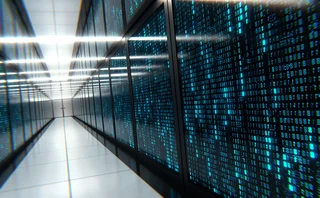Going Green
TRADING TECHNOLOGY
As financial firms around the globe rely more heavily on algorithms and black-box trading to execute trades in milliseconds, the demand for processing power is exploding.
There are two trends at work, says Bill Mew, UK advocacy and communications manager for IBM's financial services sector. "On the one hand, trading banks can't afford to miss the boat on algorithmic trading and they are requiring more and more horsepower to do it," he says. "On the other hand, power consumption is going through
Only users who have a paid subscription or are part of a corporate subscription are able to print or copy content.
To access these options, along with all other subscription benefits, please contact info@waterstechnology.com or view our subscription options here: http://subscriptions.waterstechnology.com/subscribe
You are currently unable to print this content. Please contact info@waterstechnology.com to find out more.
You are currently unable to copy this content. Please contact info@waterstechnology.com to find out more.
Copyright Infopro Digital Limited. All rights reserved.
As outlined in our terms and conditions, https://www.infopro-digital.com/terms-and-conditions/subscriptions/ (point 2.4), printing is limited to a single copy.
If you would like to purchase additional rights please email info@waterstechnology.com
Copyright Infopro Digital Limited. All rights reserved.
You may share this content using our article tools. As outlined in our terms and conditions, https://www.infopro-digital.com/terms-and-conditions/subscriptions/ (clause 2.4), an Authorised User may only make one copy of the materials for their own personal use. You must also comply with the restrictions in clause 2.5.
If you would like to purchase additional rights please email info@waterstechnology.com
More on Trading Tech
New FPGA component aims to curb co-lo costs
Hardware ticker plant provider Exegy is working on a new FPGA solution that it says will free up costly processing power on firms’ existing co-lo servers.
Market data woes, new and improved partnerships, acquisitions, and more
The Waters Cooler: BNY and OpenAI hold hands, FactSet partners with Interop.io, and trading technology gets more complicated in this week’s news round-up.
Asset manager Fortlake turns to AI data mapping for derivatives reporting
The firm also intends to streamline the data it sends to its administrator and establish a centralized database with the help of Fait Solutions.
The murky future of buying or building trading technology
Waters Wrap: It’s obvious the buy-v-build debate is changing as AI gets more complex, but Anthony wonders how trading firms will keep up.
FactSet lays out trading roadmap post LiquidityBook deal
The software and data provider announced it was buying LiquidityBook this month, filling a gap in its front-office suite of solutions.
BlackRock tests ‘quantum cognition’ AI for high-yield bond picks
The proof of concept uses the Qognitive machine learning model to find liquid substitutes for hard-to-trade securities.
The future of trading takes shape
The future of trading across the capital markets and the drivers likely to shape the ever-evolving industry
On GenAI, Citi moves from firm-wide ban to internal roll-out
The bank adopted three specific inward-facing use cases with a unified framework behind them.







